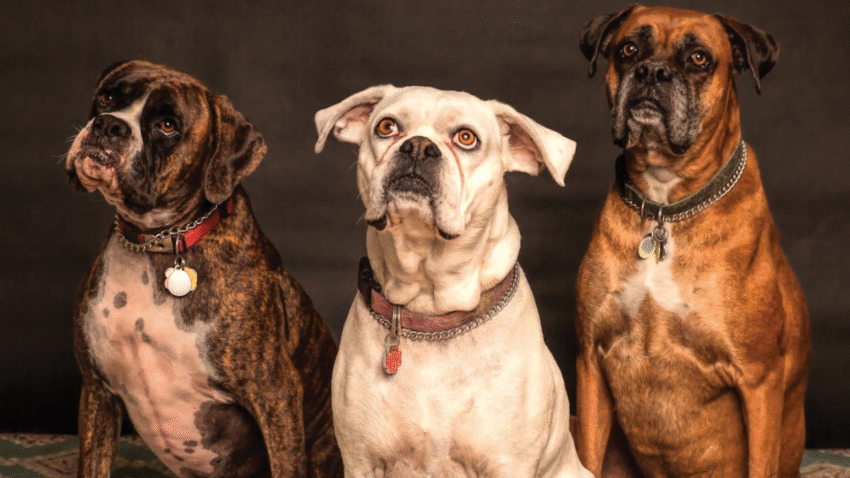Introduction
Are your dog’s eyes watery, crusty, or red? Learning how to clean your dog’s eyes and prevent infections is a simple but vital part of their grooming and healthcare routine. In this guide, you’ll discover how to gently clean your dog’s eyes at home, spot early signs of infection, and keep their eyes bright, healthy, and clear year-round.
Why Eye Care Matters for Dogs
Your dog’s eyes are exposed to dust, pollen, dirt, and bacteria every day. Without regular cleaning, debris can build up, leading to irritation or infection. Some breeds—especially those with flat faces or long hair—are more prone to eye issues and need extra care.
Proper eye care helps:
- Remove tear stains and discharge
- Reduce the risk of eye infections
- Prevent blocked tear ducts
- Catch early signs of eye conditions
- Keep your dog looking and feeling their best
Regular cleaning and observation can make all the difference in protecting your dog’s vision and comfort.
Step-by-Step Guide to Cleaning Your Dog’s Eyes
1. Gather the Right Supplies
You’ll need:
- Sterile saline solution or vet-approved eye wash
- Clean cotton pads or soft gauze (never cotton swabs)
- Soft cloth or towel
- Treats for positive reinforcement
Avoid using tap water, alcohol, or hydrogen peroxide near your dog’s eyes.
2. Choose a Calm, Well-Lit Area
Pick a quiet room with natural or soft light so you can clearly see the area around your dog’s eyes. Have your dog sit or lie down on a comfortable surface. Smaller dogs can be placed on a grooming table or lap.
Speak calmly and pet them gently to relax them before beginning.
3. Wash Your Hands First
Before touching your dog’s face, always wash your hands thoroughly to avoid introducing bacteria or irritants.
4. Inspect the Eyes for Redness, Swelling, or Discharge
Take a close look at your dog’s eyes:
- Are they clear and bright?
- Is there yellow or green discharge?
- Are the whites of the eyes pink or bloodshot?
- Is the area around the eyes swollen or crusty?
If you see signs of infection (like pus, severe redness, or swelling), stop and contact your vet before cleaning.
5. Gently Wipe Away Discharge
Soak a cotton pad or gauze with saline solution or an eye-cleaning solution recommended by your vet. Wipe gently:
- Start from the inner corner of the eye
- Wipe outward toward the outer edge
- Use a fresh pad for each eye to avoid spreading bacteria
If the discharge is crusted or dried, hold the damp pad on the area for 10–20 seconds to soften it before wiping.
6. Trim Hair Around the Eyes (If Needed)
Long hair can irritate the eyes or trap dirt and debris. Use blunt-tipped grooming scissors to carefully trim hair that blocks vision or touches the eyeball. If you’re unsure, ask a groomer or vet to help.
Always work slowly and never cut near the eye if your dog is moving.
7. Reward Your Dog with Praise or Treats
Positive reinforcement helps your dog associate eye care with a pleasant experience. Praise them throughout and offer a small treat when you’re done.
Make this part of your weekly or bi-weekly grooming routine to help them get used to it.
Common Mistakes to Avoid
1. Using Dirty or Shared Cloths
Reusing cloths between eyes or dogs can spread bacteria and cause infection. Always use fresh, clean materials.
2. Using Human Eye Products
Never use human eye drops, wipes, or creams on your dog unless directed by your vet. Some can be toxic or irritating.
3. Touching the Eyeball Directly
Avoid rubbing or poking the actual eye. Focus on cleaning around the eye instead.
4. Forcing an Uncooperative Dog
If your dog is frightened or resistant, take a break. Forcing the process can lead to injury or create negative associations.
5. Ignoring Ongoing Discharge
Chronic tearing, yellow discharge, or eye rubbing should always be evaluated by a vet. These may signal underlying issues that require treatment.
Extra Tips & Recommendations
Tip 1: Watch for Breed-Specific Needs
Some breeds are more prone to eye issues:
- Flat-faced dogs (Pugs, Bulldogs) often have shallow eye sockets and need daily eye care.
- Long-haired dogs (Shih Tzus, Maltese) need regular trimming around the eyes.
- Large or droopy-eyed breeds (Cocker Spaniels, Basset Hounds) may suffer from tear staining or eyelid disorders.
Tailor your eye care routine based on your dog’s breed and facial structure.
Tip 2: Prevent Tear Stains Naturally
Tear stains (the reddish-brown marks under the eyes) are common in light-colored dogs. To reduce them:
- Clean the eye area daily with a saline wipe
- Use a stainless-steel water bowl (plastic can harbor bacteria)
- Check for allergies or dietary triggers with your vet
Tip 3: Protect Your Dog’s Eyes During Play or Bath Time
- Shield their eyes when applying shampoo or flea treatments
- Avoid letting dogs hang their head out of car windows
- Monitor for eye injuries during rough play or outdoor adventures
Prevention is key to avoiding more serious problems.
Conclusion
Taking a few minutes each week to clean your dog’s eyes can prevent discomfort, infection, and long-term vision issues. With gentle care, the right products, and consistent attention, you’ll keep your pup’s eyes clear, bright, and healthy for years to come.
🐾 Bookmark us for more essential grooming guides and dog health tips!
